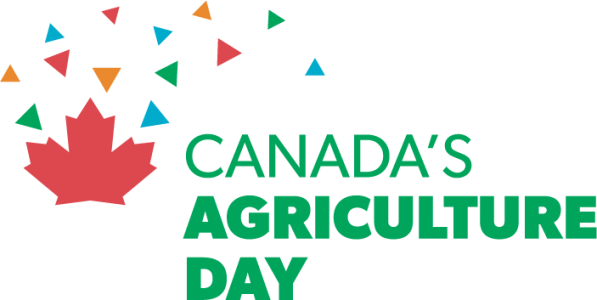
Canada’s Agriculture Day 2018
On the occasion of Canada’s 2018 Agriculture Day, which is on February 13th, I want to take time to reflect on some of the incredible work in agriculture that Canadians are accomplishing. It is such a thrill to pause each February 13th and realize that we’ve made incredible progress in just the past year, and that sensation of admiration and optimism is only multiplied when we compare where we are now to where we were five, ten, and fifty years ago.
One of the many events going on over the course of the Ag Day is this celebration in Ottawa. While I can’t be there in person, I think that the existence and structure of this event encapsulates so much of what is going right in Canada right now. Their speakers include cattle ranchers, food processors, retailers, producers of pulses and grain staples, turkey and chicken farmers, elected officials, authors, representatives of national and multinational organizations, communications experts, and more. Half of their featured speakers are women. They have a great diversity of ages, experiences, and perspectives. Beyond the science of agriculture – about which there is much deserved praise to be given – I think that this collaborative spirit, where very different people from many parts of the food come together, is one of the most compelling element of Canada’s Ag Day 2018. 
Another element of Ag Day that encourages me – even given sobering statistics about worldwide hunger and malnutrition, which are tragically again on the rise after years of successfully lowering them – is how what is happening in Canada links up with larger international and global goals. We all know about the 2030 Sustainable Development Goals, a set of 17 aspirations for the world’s future. Covering topics from ending poverty and empowering women and girls to building resilient infrastructure and halting biodiversity loss, these goals are both ambitious and complicated.
For people in the ag world, SDG2 is the most immediately relevant: “End hunger, achieve food security and improved nutrition, and promote sustainable agriculture.” Of course, no matter how much we would love to be able to simplify our issues, no goal is going to be solved in isolation. This is why I think it is so inspiring that here in Canada we are getting better and better each year at understanding how agriculture links up with supporting rural communities, giving our young people the best possible education, protecting our natural environment, and incentivizing sustainable cities, among so many other initiatives. Recent studies have shown that our soil is less vulnerable to erosion now that it was ten years ago, largely thanks to the shift away from intensive tillage in the Prairie region, and that, since 1981, our nationwide biodiversity has shown steady improvements.
(As a technical aside for those not intimately familiar with the SDGs: Within each goal are targets. Of particular interest to those of us in agriculture is Target 4, which states, “by 2030, ensure sustainable food production systems and implement resilient agricultural practices that increase productivity and production, that help maintain ecosystems, that strengthen capacity for adaptation to climate change, extreme weather, drought, flooding and other disasters, and that progressively improve land and soil quality.” Below the Targets are indicators, an even more granular level of analysis; Indicator 2.4.1 is where we find the Landscape Heterogeneity Sub-Indicator, a measure of biodiversity in the context of farms.)
A huge amount of work remains before us, however. Though Canada’s agricultural lands show lower levels of nitrogen in the soil than the global average, our trends show a troubling rise over the years. The last four decades have seen a dramatic rise in the prevalence of overweight and obesity among Canadians; at the same time, food waste and loss remain a critically important problem that cost our economy as much as $31 billion per year. Plus, even if we were to work our way towards a flawless agricultural cycle here at home, I doubt that most of us would rest until we had done everything possible to continue fighting hunger and malnutrition elsewhere in the world, whether that means exporting agricultural products, creating robust knowledge-sharing networks, or using our expertise to build capacity elsewhere.
Finally, I want to express personal gratitude that Ag More Than Ever is doing such good work. In addition to organizing the Canada’s Agriculture Day Ottawa, they work year-round to change the way that people think and talk about agriculture. I have worked in communication, public affairs, and issues management for many years, and I know that, quite often, the way an issue is communicated to and perceived by the public is as important as the core of the issue itself. Ag More Than Ever is doing an amazing job turning farmers, as well as many other diverse members of the food system, into agvocates who tell the industry’s story in ways that are truthful, respectful, and compelling.
I hope you will take time today to learn something new about agriculture in Canada, to thank someone doing good work in our food system – be it a farmer, retailer, or friend whose cooking you love – or to reflect on how you are going to contribute to an improved food future for all. Happy Ag Day!